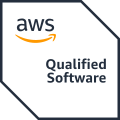What is the significance of "shared language"?
Misunderstandings arise when people use different words to convey the same meaning, or when the same word carries different meanings. The concept of "shared language" involves people establishing a common understanding through spoken / written communication, enabling more effective interaction. (Thomas and McDonagh, 2013)
Each member of your organisation brings their own life experiences and professional background. Varied exposure to industry-specific terminology, roles, and organisation-specific jargon results in diverse interpretations of words. This series will not focus on communication styles, organisations have their own culture and behaviour, and varying degrees of psychological safety. These factors contribute to how organisations communicate.
When applied to organisations, people work together to achieve outcomes and value for their customers / consumers. Over time, reducing the gap between "what is said" and "what is understood" can have a dramatic impact on the effectiveness of collaboration, communication and strategic alignment.
This guide is the first instalment designed to get you thinking about your organisation's use of language for certain topics / domains:
- Organisation and team structure
- Strategy and outcomes
- Work and right sizing
- Connecting it all together
You may also have other language / taxonomy in your organisation for roles, skills and related topics when it comes to workforce related topics.
How can “shared language” help?
In today's world the notion of having a "shared language" is more important than ever before. People work across time zones, locations and presence (physical or virtual) and even then, how often have you spoken to someone only to later realise that you were talking about different things?
Consistent understanding and usage of language can either fuel efficiency across the enterprise or present persistent obstacles to collaboration within and between teams, as well as throughout the entire organisation.
Some of the many factors:
- As the world becomes more connected, the workforce and workplace become more intwined. This creates new complexities and opportunities for confusion.
- People join from other companies and contexts, which means they also bring their own language and meaning.
- People are continuously learning new practices and technology, which often introduces new language with it. Cloud, pipelines and containers all have a new meaning.
- Internal efforts to transform and change how organisations work often introduce a new operating model which comes with more language, along with new roles, responsibilities, structures, work taxonomy and how strategy connects to the work.
Establishing a shared language can help with communication and collaboration. A shared language isn't a panacea, it requires a lot more effort to embed and created a shared understanding. You may also be up against the organisational sceptics who think you are giving new names to old things. Providing clarity on topics around: people, teams, planning, work, roles, goals, etc. can go a long way to helping bridge that gap. It is necessary but not sufficient.
It seems, we aren't alone in our thinking either, our chief TeamFormer Sam Yeats recently talked at the event Enterprise Technology Leadership Summit Europe 2024 and asked the audience what they thought. There is a lot of ambiguity across a broad set of organisations.

Getting Started
Creating a universally adopted "shared language" throughout an entire organisation may be quite challenging.
Organisations should develop a context-specific language, and the following table outlines the key components identified by TeamForm as crucial for achieving consistent understanding across the organisation. It also explains why these components are important to consider.
.png)
Adoption
If new employees or individuals transitioning between roles struggle to locate this information easily, it is unlikely to gain widespread acceptance. This is even more challenging if your tooling is competing against you for language. e.g. one tool calls a team a Team, another a project and another a group.
Approach:
- Creating comprehensive ways of working handbook defining shared language, organisational model, job roles, etc.
- Incorporating handbook during transitions in ways of working, especially when onboarding new colleagues or assuming new positions.
- Developing role-specific training initiatives and role-based communities of practice with HR department collaboration to address specialised role expectations effectively.
What’s next
This can be quite a dry topic, to keep things fresh and consumable we will keep this article brief and further expand with real world examples over the coming weeks. We have recently launched a Miro Canvas (Strategy to Execution Map) to help you visualise your organisation/team structure, your strategy/goals and your work. Our very own Eugene Chung has created this and we cannot wait to see what you do with it.
Summary
Creating a shared language is a foundational element in adopting new ways of working. It generates a common understanding, resulting in easier adoption of your organisation’s behaviours, processes and practices. This helps to wire / thread language, data with behaviour into your tooling ecosystem. Your tooling should support your organisation and your language.
"...we had accurate data, that meant we had confidence around people mapped to value streams ... and importantly applied governance to the value streams to make sure that our tooling was consistent from Jira all the way to the financial ledger..."
adapted from the incredible SEACon 2022 talk by Tony Caink "Nationwide’s Operating Model for End-to-End Value"
Additional reading
- The GitLab Handbook + TeamOps: Optimizing Team Efficiency GitLab Content for inspiration
- How We Team.fyi - a collection of awesome companies and how they are working
- Strategy to Execution map by Eugene (Miro Canvas)
- Team Taxonomies for digital, data and technology organisations by Emily Webber
- Key Concepts — Team Topologies
- Sooner Safer Happier - Quick Learns (Value Stream Primer + Business Outcome (OKR) writing)
















